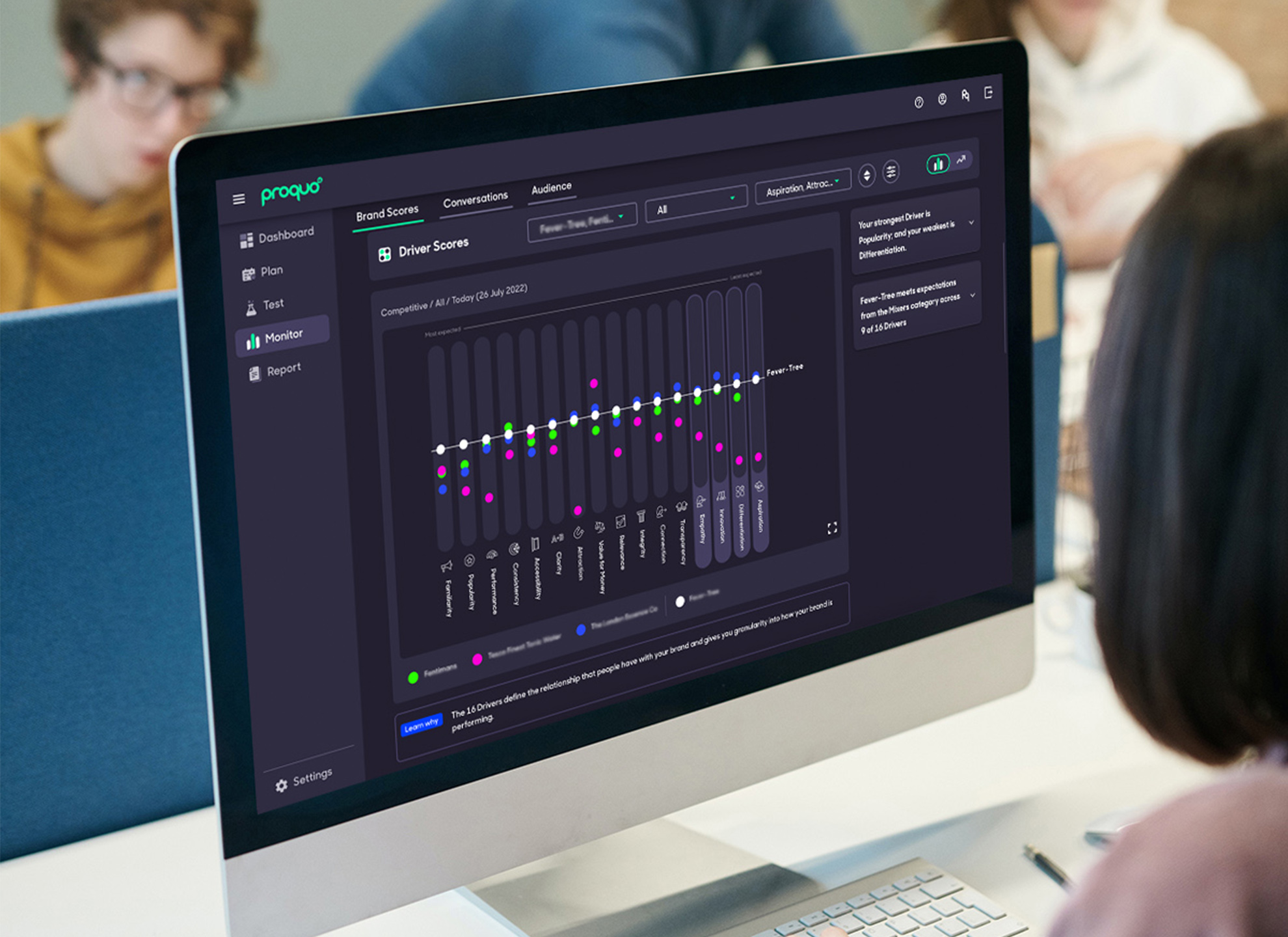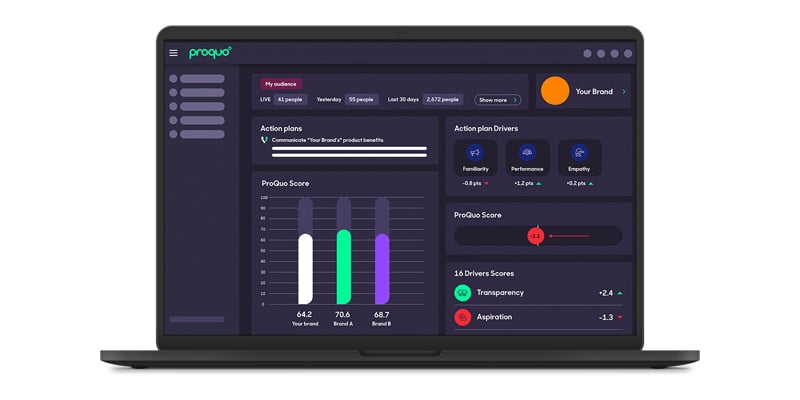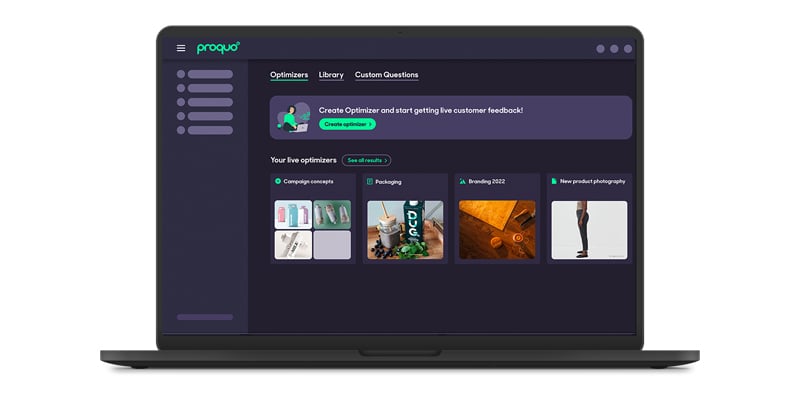Market Research tools: what to look out for

Market research tools need to change.
We’re living in a fast-paced, tech-centric world, where you can read news on the go, access instant updates on weather and travel, and track anything - from fitness to period cycles and sleep patterns – in real-time.
We run our lives on technology, so the question is, why aren’t we running our brands in the same way?
There are 3 key problems with current Market Research methods, from the way we collect this data to the nature of the data itself and how to action this data.
In this guide, we’ll explain why Market Research is in need of an update and what alternative methods you can look out for.

With much of this data collected via interviews, surveys, focus groups and customer observations, a key problem is relevance.
Neuroscientific research on System 1 and 2 has proven that most people make decisions based on their feelings (System 1) and then confirm these decisions with their thoughts (System 2). This is also known as ‘fast’ and ‘slow’ thinking, where consumers rely on their gut instincts to quickly determine how they feel about something and then justify this feeling with rational thinking.
Traditional Market Research methods are only capable of gathering System 2 responses. But modern science tells us that we should be accessing the sub-conscious to understand what truly causes consumers to bond with brands.
Entry price points for Market Research tools are rising, while our budgets are shrinking.
The cost of hiring an agency to conduct the research and the time it takes to brief that agency on what is needed for the research, really adds up.
Traditional Market Research software also requires patience, as results can take a long time to return. This is at odds with the ways we navigate the world, where we like to make immediate proactive decisions. A long data collection process leads to the data itself becoming irrelevant to the marketer.
Nowadays, brands have to assimilate many different data sources to gain an accurate and holistic perspective on their brand.
Each of these solutions and models is separate so the analysis becomes its own beast, with brands spending hours trying to integrate Nielsen data on sales with campaign analyses, and results from focus groups.
This slow-paced, complex array of data and models contradicts the modern marketer who wants easily-accessed, up-to-date, intuitive information upon which to make confident decisions.


To make the best decisions for your brand, the answer isn’t to abandon what you know.
But there are easy improvements you can make, by:
![]()
Scrutinizing your current research methods

Questioning where there’s room for improvement

Modernizing your approach by making yourself open to new, smarter sources of information
Are you sure the Market Research you're investing in, is being conducted, gathered, and reported on most optimally?
Here are some of the common pitfalls with the most traditional modes of research:
Social Listening data doesn’t always represent what a true user thinks and believes, rather, what they publicly project about themselves online.
Static Brand Trackers only show one point in time, so you completely miss the changes in your brand in between these dips into the market.
Focus Groups are outside the reality of how brands are really consumed – people tend to over analyze concepts and “group think” can be another challenge.
The key to success is being open to upgrading to new technologies and arming yourself with the best of today.
Is there a way that you can work smarter, not harder? Make yourself and your research go further, faster?
AI is just a much more modern, smarter and accurate way of gathering intelligence. What makes AI such an exceptional research partner is its unparalleled analytical ability - able to read through scores of data, detect patterns within seconds and generate actionable outcomes.
In the same way you wouldn’t map out a journey using a compass and guidebook – reverting to the easier option of Google Maps – you shouldn’t be using old fashioned techniques to drive the decision making on your brand.
Brands are now on the hunt for something that has the power to fuel brand growth, as well as de-risk their marketing endeavours.
There’s no shortage of solutions out there to fulfil this purpose.
We’ve created a guide that outlines the most important things to look for when deciding on your next Market Research tool.

Always-on data
Live data helps brands to be proactive, as they can see the impact of their actions in real-time. In addition to proactivity, always-on data also gives you a clearer picture of your brand throughout the year - across all your activities, big and small.
Actionability
Finding action out of your data is so much easier when you’ve got AI. Some of these platforms are capable of surfacing actions out of this data - identifying next steps for a brand to take, based on their results.
Aggregation
There is so much data but currently it lives in many different places in various Excels and PowerPoints on a marketer’s computer. Look for platforms which provide a centralized destination to house all of these data sources in one place.
Asset Testing
Nowadays, technology platforms allow you to test virtually anything – from new packaging to mood boards, digital assets, messaging and even your choice of influencers. These tests allow you to pulse check ideas (and assets) with consumers to see how they’ll be received before you go all in.
Implicit gut feel
If we know that 95% of purchasing decisions are based off System 1 responses, you'll need a solution that can accurately capture both System 1 and 2 consumer responses to reflect buying behavior.
Scale
You shouldn't sacrifice scale for real-time data. Ensure the tool you choose still speaks to a robust amount of people over time.


The right data can supercharge any brand.
But the wrong types of data can be dangerous, leading to inaccurate decisions and costly mistakes.
There’s a huge opportunity for AI within marketing and insights.
With AI you get:
ProQuo AI has modernized the principles of Market Research - using AI to transform it into something bigger and better.

1. Neuroscientific data - ProQuo AI’s research emulates both how the human mind works and how humans decide what to buy.
The platform uses a blend of System 1 and 2 to retrieve consumer responses.
As it has been proven that humans make decisions based on their feelings (System 1) and then confirm these decisions with their thoughts (System 2), this data provides a much more accurate indication of real consumer behavior.
2. Affordability - “We don’t have budget for consumer intelligence". With ProQuo, you get so much more than just a tracker - from awareness data, direct interactions with consumers, and real-time updates on performance.
3. Real-time updates - The live platform interacts with people daily, monitoring what they need from categories and brands. This type of data is invaluable to inform strategies, innovate new ideas, optimize in-market activities, and prove the value of marketing to stakeholders.
4. Actionable decisions - ProQuo’s AI simulates the complexities of the brand world in an automated way. The more data the AI ingests, the smarter it becomes. All brands on the platform have to do is state their marketing goal. The AI will then review the brand’s data and surface specific actions for the brand to take - detailing exactly what this brand needs to do in order to get to this goal.
5. Everything in one place - On ProQuo, all of the main components of marketing are aggregated in one place. Brands can monitor performance every day, create winning strategies (guided by AI) and test any creative asset or concept.
Marketing today is much faster and more creative than the research that serves it.
There are new solutions and changes that have been made, which you can embrace today to supercharge your growth.
If you want to see how ProQuo AI’s brand intelligence can help your brand, chat to us here.
Our platform will take your brand further, faster.
Quick links
Get in touch
hello@proquoai.com
368 9th Ave, New York, NY
10001, USA
1100 Ludlow St, Philadelphia, PA
19107, USA
245 Hammersmith Road, London, United Kingdom, W6 8PW
173 Oxford Road Johannesburg 2196,
South Africa
© 2020 ProQuo AI All rights reservedWebsite by Blend